#ITALIAN BAROQUE QUEEN
Text
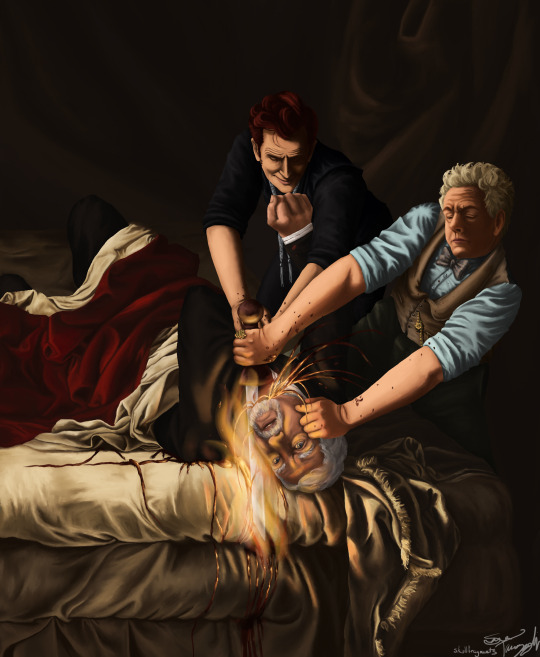
soooo i've been real busy this past month and change working on this monster of a painting! it was originally for the GO Ref library study club but clearly took much longer than i anticipated😅
for those of you who don't recognize it, this is based on one of my favorite historical paintings, Judith Beheading Holofernes (1620) by Artemisia Gentileschi. i love the Baroque period and this painting (as well as her other works) makes me insane. here it is Good Omens style so maybe all of you can be insane with me <3
"Aziraphale (and Crowley) Beheading the Metatron"
(non-bloody and non-glowy versions under the cut)
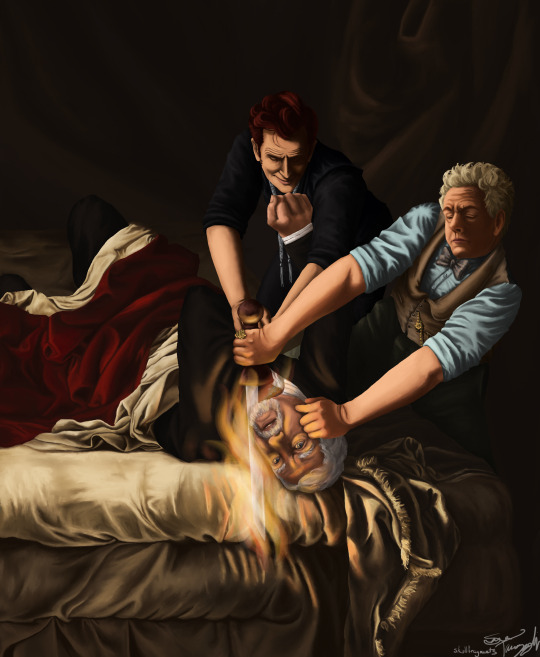

#IT'S DONE#can i get a wahoo#dear tumblr pls don't fuck up the quality#sara does art#good omens#good omens fanart#shout out to the GORL server!!!#crowley#aziraphale#aziracrow#the metatron#OFF WITH HIS HEAD#i will never attempt digital oil painting again#(pls stop me if i do)#artemisia gentileschi#ITALIAN BAROQUE QUEEN#italian baroque#i need you all to know that the suggested tag that came up was 'italian barty crouch jr.'#david tennant you're already in this picture that's enough#baroque art#judith beheading holofernes#the superior version btw#tw blood#didn't you have a flaming sword? it was flaming like anything#if u zoom in pls appreciate the tartan bowtie detail#that shit took me way longer than it should have#as well as the approx 15hrs each i spent on azi's sleeves#did i miss any tags??#ART#i'm going to hibernate now thank you
489 notes
·
View notes
Text
𝙄𝙩 𝙬𝙞𝙡𝙡 𝙗𝙚 𝙬𝙤𝙧𝙩𝙝 𝙩𝙝𝙚 𝙚𝙛𝙛𝙤𝙧𝙩,
𝙏𝙝𝙚 𝙖𝙘𝙘𝙤𝙡𝙖𝙙𝙚 𝙤𝙛 𝙖𝙘𝙖𝙙𝙚𝙢𝙞𝙖,
𝘽𝙡𝙤𝙤𝙙, 𝙨𝙬𝙚𝙖𝙩 𝙖𝙣𝙙 𝙩𝙚𝙖𝙧𝙨 𝙖𝙡𝙡 𝙩𝙝𝙚 𝙬𝙖𝙮


#ffxiv oc#ffxiv wol#dark academia aesthetic#dark academia#italian fashion#baroque#medieval#middle ages#painting#mary queen of scots#ffxiv#ffxiv ast#ffxiv astrologian#astrologian#astro#ast#final fantasy xiv#kardions
4 notes
·
View notes
Text
Periphery, part 1 (ffxiv write: day 4)
Xavery Alexander Hearthome: Warrior of Darkness, Fatewalker, Shepherd to the Stars.
To those that knew the person behind the nomenclature, the famed Warrior was no fighter, but a lover of life walking on the periphery of existence. Xavery had always held a penchant for being present exactly when necessary, but otherwise unseen by the world. A wanderer amongst time and space by trade, they had never been one to remain in one longer than fate allowed; he did not want to imprint his presence more than necessary.
So… how did this unassuming Viera transcend to become a household name? What follows is a brief account of a peripheral point in their story.
The Vault, Ishgard. Early afternoon.
Delicate strings dancing, plucked by timeworn hands. Calloused fingers softly strumming the handheld harp-bow. Xavery continued their commissioned performance for passersby–knights of the Heavensward making rounds–bowing when finished. They had just finished unfolding the harp back into a bow when a small group of people ran past them. Ser Aymeric and Ser Haurchefant were amongst the group… along with a brown-haired Miqo’te.
“I’ve never seen him before. I hope he’s not here to be the next court musician. But… Why were they all running? And why was that stranger with them?,” he thought to himself. “Hm?”.
Xavery’s Echo had triggered and he now saw a light blue musical staff, tinted with a faint purple glow, leading to the Miqo’te he had just seen. The music only Xavery could hear was not music at all—in fact, it was the sound of clanking swords, lightning striking and happy laughter.
“There’s more to him than meets the eye—I’m sure of it. I’ve gotta follow him.” Xavery followed a fair distance behind the group, bow sheathed.
The small party had run to the bridge leading to an airship landing where King Thordan stood ready to take off. Xavery arrived in time to peer over the shoulders of the small group and witness Haurchefant charge towards the Miqo’te.
“Wait, what’s he—”
A bolt of pure light struck the Elezen knight’s shield, forcing its way deeper into the metal. The brown-haired boy stood behind Ser Haurchefant, cowering but protected.
“No… No!,” Xavery thought. “How can I stop this? Is it my place to help? What should I do, Jehantel?!”
The light melted the metal, piercing and knocking Ser Haurchefant to the ground. A gaping hole was left in the shield and in the hearts of the witnesses. Everyone present, minus Xavery, ran to the knight’s side.
“I–I can’t move. I can’t breathe. Oh no. NO,” Xavery back stepped away from the scene, remaining on the periphery of listening distance.
The Viera Bard heard the signifying wind chime; Haurchefant’s soul had already left the mortal plane. They turned to view the scene ahead of them: white whole notes and rests danced around the knight who clung to breath. A black musical staff connected Xavery and Haurchefant, but it was melting in the middle; the sound of screaming, gongs and gushing blood rang in their ear. The knight they knew—their friend—had sacrificed himself for another. Xavery’s heart was hurting.
“Make it stop! Just die already! It hurts too much to know you’re gone but physically remain!”
Just as the Viera was about to turn to leave, he heard a familiar voice speak. With his last breath, Haurchefant spoke gently.
“A smile better suits a hero.”
Xavery’s Echo–the music–ceased.
#unwrittenbones#ffxiv#ffxivwrite2022#ffxiv roleplay#ffxiv write#ffxiv write 2022#ffxiv writing#ffxiv fanfiction#writingprompts#painting#mary queen of scots#italian fashion#dark academia aesthetic#middle ages#baroque#medieval#dark academia#ffxiv fanart#wol#warrior of light#final fantasy xiv#elezen#viera#male viera#final fantasy viera#ffxiv wol#ff14#lalafell#ffxiv art#rava viera
1 note
·
View note
Text
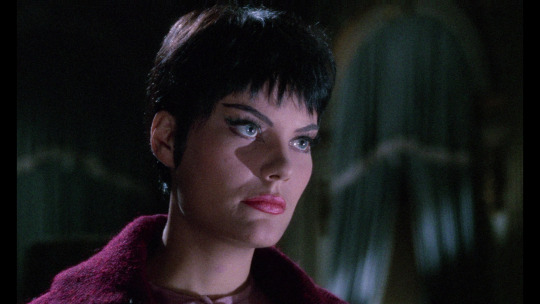
Recently watched: Italian horror maestro Mario Bava’s slasher movie Blood and Black Lace (1964). Tagline: “A fashion house of glamorous models becomes a terror house of blood!” A sadistic masked and gloved serial killer is relentlessly stalking and murdering his way through the fashion models of the chic haute couture salon run by ultra-rich designer Cristina (Eva Bartok) and her lover Max (Cameron Mitchell). (Picture a procession of fiercely elegant women wearing cocktail dresses with impeccable beehive hairdos getting gruesomely murdered one by one). I’m no expert on Bava - the only other film of his I’ve seen is Black Sunday (1960) with cult movie queen Barbara Steele – but wow, what a stylist! From the credits to the white-knuckle finale, Bava envelopes you in a supremely alluring vision with the soundtrack (Latin exotica, heavy on the bongos), costumes, baroque sets and lighting (characters are routinely bathed in fuchsia or green neon, even when that light source makes no sense). Perhaps inevitably, there are vivid splashes of red: an incriminating leather-bound diary, handbags, telephones - and of course - plumes of blood. The victims’ grisly deaths still pack a genuinely nasty jolt. (As Slant magazine put it, “The killings in Blood and Black Lace are still disturbing yet have the vitality of pop art”). An additional bonus: the juicy overripe performances from Hollywood’s Cameron Mitchell and Hungary’s Eva Bartok, both veterans of European co-productions. (The same year, Mitchell starred opposite Jayne Mansfield in the truly wild German exploitation flick Dog Eat Dog – what a career!).
#blood and black lace#mario bava#giallo#italian horror#italian horror movie#lobotomy room#cult cinema#cult movie#cult film#italian film#italian cinema#cameron mitchell#eva bartok
14 notes
·
View notes
Photo

Interview: Dr. Bastian Eclercy on Guido Reni at the Städel Museum, Frankfurt
Misunderstood, neglected, forgotten. The Städel Museum in Frankfurt, Germany is
rediscovering one of the star painters of the Italian Baroque in a landmark exhibition: GUIDO RENI. The Divine. In his day, Reni (1575-1642) was one of the most successful and celebrated painters in all of Europe, coveted by the most important patrons, including the Borghese Pope Paul V, the Duke of Mantua, and the Queen of England. In this interview, James Blake Wiener speaks to curator Dr. Bastian Eclercy about the exhibition and Guido Reni’s brilliance as one the greatest artists of the Baroque era.
Learn more about Interview: Dr. Bastian Eclercy on Guido Reni at the Städel Museum, Frankfurt
29 notes
·
View notes
Text
Writing about architecture in the Dishonored universe is so hard. There was no Queen Elizabeth so there is no such thing as Elizabethan Baroque. There was no Italian influence. There wAS NO STALIN OR SOVIET UNION.
47 notes
·
View notes
Text
Drottningholm Palace

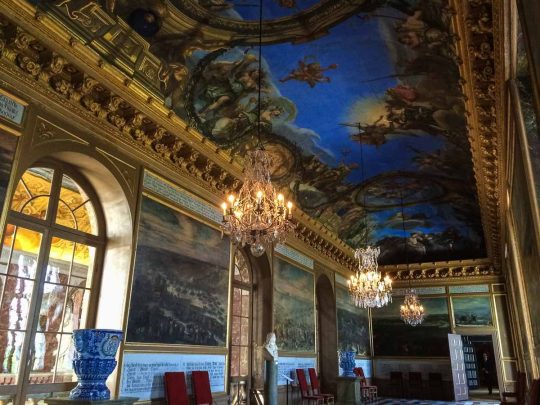

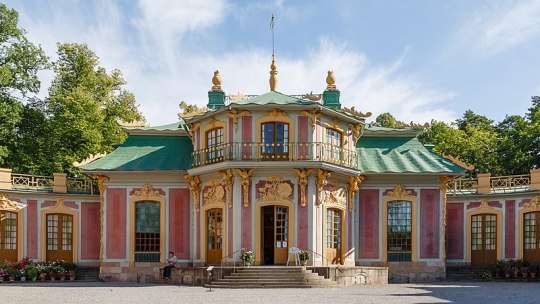
Drottningholm Palace is located in Drottningholm, Sweden. The royal castle was built on Lovön Island in the 1600s upon an earlier stone palace. Queen Hedvig Eleonora purchased the castle a year after her role as queen ended, but it burnt to the ground the year she purchased it. She commissioned the palace to be built, and work began in 1662. The palace has a long history and was abandoned in the 19th century as it served as a symbol of the old dynasty. King Oscar I, took an interest in the palace and began repairs to preserve the structure. However, Oscar I and II were criticized for modernizing the palace instead of restoring it to its original state. It was King Gustav V who reconstructed the palace to its 18th century appearance. The palace has French Baroque and Italian Classical elements and a Nordic sateri roof. The 1,400-acre property has a church, a 1766 theater, formal gardens with water features, and a Chinese Pavilion. The palace is the private residence of the Swedish royal family, who live in the southern wing of the palace. It’s a UNESCO World Heritage Site. The Swedish Military guards the palace. Drottningholm Palace is open to the public.
16 notes
·
View notes
Note
{{ Oh! I saw the reblog about Rome and it made me realize you might be a good person to ask. I'm going to visit Italy in about two weeks! I'm not Catholic but I do have a deep fascination with religious history and beliefs and the traditions people uphold for them. Do you have any recommendations on what, exactly, to explore in Rome? We already plan to stop in Vatican City, but do you know what one would DO there?
I'm so excited for you!! Please tell me how it goes. I love Italy and the country means a lot to me.
For the Vatican itself I can only really vouch for St. Peter's Basilica; the morning that I was there was the morning of a major event (the canonizations of, among other people, Oscar Romero and Pope Paul VI--yes, there is a pope called Paul the Sixth, a fairly recent and important one actually; maek u think), so that took up most of my and my mother's time. In the basilica I'd recommend picking a few monuments or statues or tombs and looking for them as a sort of scavenger hunt; Queen Christina of Sweden is an interesting one from an LGBT history point of view, especially since she's one of only a few women entombed in St. Peter's.
Elsewhere in Rome I'd be remiss not to recommend the Capuchin Crypt, one of the original BONE CHURCHES. I use a bookmark I got there for every Locked Tomb book I read.
For non-Catholic religious history there's the Jewish Ghetto, which is remarkably intact and actually a thriving (partially-)Jewish neighborhood to this day, relatively laid-back and not quite as expensive as most of the rest of central Rome. The neighborhood has an adorable fountain called the Fountain of the Turtles, several genuinely good restaurants that people assume are bad because they keep getting review-bombed by antisemites, and a gorgeous grand synagogue. There's also an intact Mithraeum (as in Temple of Mithras) under one of the major churches, San Clemente, that I haven't been to yet but intended to go to with some friends on my next Italy trip in about six months. Tell me all about it if you make it there first!
Some newer sights worth seeing might be the main Italian government buildings--they're all Renaissance or Baroque palazzi that the Italian state expropriated when it took over most of the city from the papacy in 1870--and the Palace of Justice, a ludicrously blinged-out Supreme Court building built around the turn of the twentieth century. It's on a stretch of the Tiber that turns jade-green in the early to mid-afternoon--probably because of the water pollution, but it's still beautiful to see.
The best of the main shopping drags is the Via del Corso. It's fun, but only when one has a lot of spoons for Being Around People in Crowds. I got a beautiful scarf there in 2018.
Feel free to message me any time between now and when you go if you want to ask more!
(A final note: lots of churches in Italy, including the Vatican, ask that people dress "modestly," but all this means is long pants or a below-the-knee skirt, which iirc is what you generally wear anyway, so you'll be fine.)
8 notes
·
View notes
Text
Sharon’s study notes #1 ー History exam
Hmー Baroque music, huh...? This really is not my strong suit but since Shuu-san refused to help out, I’ll have to wing it somehow. Otherwise Ms. Gormley (@hanagormley) will most definitely give me supplementary classes during summer.

[Grabs her notebook.]
For now, I’ll just write down a few important facts on each of the pieces featured on the exam...I doubt I can remember all the information in the textbook, so I just have to hope I make a good selection.
ーー Oh! I should share these notes with Yuriko-chan (@yuriko-tsukino-rp) and Leissa-chan (@the-loony-and-the-fox) as well!
Toccata and Fugue in D minor
- Composed by Johann Sebastian Bach
- Uncertainty about the exact date of composition, but it was most likely during the first half of the 18th century.
- First published during the Bach Revial era in 1833
- Featured in Walt Disney’s Fantasia, which boosted its popularity.
- It is now said to be the best known organ piece of the 18th century
Messiah
- Composed by George Frideric Handel in 1741.
- First performed in 1742 in Dublin.
- The piece got its inspiration from the King James Bible and is said to be a reflection on Jesus as the Messiah called Christ.
- Its structure resembles that of an opera, but it actually belongs to the genre of the English oratorio.
The Four Seasons
- Composed by Vivaldi between 1718 and 1720.
- Published in Amsterdam in 1725.
- It is Vivaldi’s best known work and was considered revolutionary at the time of its publication.
- The first part (Spring) bears resemblances to Vivaldi’s other work: Il Giustino.
- Vivaldi published the concerti with sonnets, which was unusual for the period. These sonnets were meant to emphasize the spirit of each season.
- The piece is often considered to be an early form of what would later be known as ‘program music’.
Harpsichord Concerto in D minor
- Composed by Johann Sebastian Bach around 1738.
- The proto version of the manuscript dates back to 1734 and was made by his son Emanuel.
- It consists of three movements: Allegro, Adagio and Allegro.
- The original melody instrument was initially believed to be the violin, but in the 21st century, scholars began to move away from said theory and now classified it as an organ piece.
The Fairy Queen
- Composed by Henri Purcell and first performed in 1692 in London.
- The libretto is an adaptop of Shakespeare’s A Midsummer Night’s Dream.
- The score was initially lost, but rediscovered in the early 20th century.
- It is said to have been composed for the 15th wedding anniversary of William III and Mary II.
- An updated version of the piece was performed at the Glyndebourne Festival Opera in 2009, celebrating Purcell’s 350th birth anniversary.
Cat Fugue
- Composed by Domenice Scarlatti and first published in 1739 in London.
- It is called the Cat Fugue because according to a legend, Scarlatti was inspired by his cat Pulcinella walking on the harpsichord keyboard.
- The nickname was only given to it in the 19th century and never used by the composer himself.
- Handel borrowed inspiration from the piece when writing his Concerti grossi.
Canon in D
- Composed by Johann Pachelbel between 1680 and 1706 (exact date unknown).
- The oldest surviving manuscript dates from the 19th century.
- It remained an obscurity for centuries but gained popularity again mid-20th century thanks to the recording of Paillard.
- It has been an inspiration for many pop songs from the 1970s onwards.
- It is commonly used at funeral or wedding ceremonies.
Gloria
- Composed by Vivaldi, possibly composed in 1715.
- Based on the hym Gloria in excelsis Deo from the Ordinary of the Mass, dating back from the 4th century.
- He wrote at least three settings for the piece, the most popular setting is the RV 589.
- Only two of the three settings survived.
- Its style resembles that of the late Italian Baroque.
L’Orfeo
- Composed by Claudio Monteverdi and Alessandro Striggio in 1607.
- Based on the greek legend of Orpheus, focusing on his descent to Hades as he attempts to bring back his dead bride Eurydice.
- Originally written for a court performance.
- It is the first opera which is still regularly performed.
- It was also the piece which moved the opera out of its experimental era.
Stabat Mater
- Composed by Giovanni Battista Pergolesi in 1736.
- It was composed for a Neapolitan confraternity.
- Pergolesi was suffering from tuberculosis when he composed the piece and finished it mere days before his death.
- It became his most celebrated sacred work, complimented by many important historians, including Rousseau.
- Just like the original Christian hymn from the 13th century, it focuses on the figure of the Holy Mary who laments as Jesus is being crucified.
#(( I actually studied this time okay ))#(( so Sharon can pass ))#(( these questions better not be super specific ))#(( because I didn't have time to read all of the details ))#(( bless wikipedia for summarizing everything ))
15 notes
·
View notes
Text
Roxolana in European literature, history and culture
Summary"This collection is the first book-length scholarly study of the pervasiveness and significance of Roxolana in the European imagination. Roxolana, or 'Hurrem Sultan', was a sixteenth-century Ukrainian woman who made an unprecedented career from harem slave and concubine to legal wife and advisor of the Ottoman Sultan Suleiman the Magnificent (1520-1566). Her influence on Ottoman affairs generated legends in many a European country. The essays gathered here represent an interdisciplinary survey of her legacy; the contributors view Roxolana as a transnational figure that reflected the shifting European attitudes towards 'the Other', and they investigate her image in a wide variety of sources, ranging from early modern historical chronicles, dramas and travel writings, to twentieth-century historical novels and plays. Also included are six European source texts featuring Roxolana, here translated into modern English for the first time. Importantly, this collection examines Roxolana from both Western and Eastern European perspectives; source material is taken from England, Italy, France, Spain, Germany, Turkey, Poland, and Ukraine. The volume is an important contribution to the study of early modern transnationalism, cross-cultural exchange, and notions of identity, the Self, and the Other". -- from back cover.
Author
Yermolenko, Galina I.
Attributionedited by Galina I. Yermolenko
Subjects
Literature
Hurrem, consort of Süleyman I, Sultan of the Turks, approximately 1504-1558? -- In literature
Hurrem, consort of Süleyman I, Sultan of the Turks, approximately 1504-1558? -- Literary collections
Hurrem, consort of Süleyman I, Sultan of the Turks, approximately 1504-1558?
Genre/Form
Literary collections
Literature
LanguageEnglish
Formatxvi, 318 pages : illustrations ; 24 cm
ContentsRoxolana in Europe / Galina Yermolenko -- East versus West: seraglio queens, politics, and sexuality in Thomas Heywood's Fair maid of the West, parts I and II / Claire Jowitt -- The tragedy of Roxolana in the court of Charles II / Judy A. Hayden -- Roxolana in German baroque and enlightenment dramas / Beate Allert -- How a Turkish empress became a champion of Ukraine / Oleksander Halenko -- Roxolana's memoirs as a garden of intertextual delight / Maryna Romanets -- Roxolana in Turkish literature: re-writing the ever elusive woman of power and desire / Özlem Öğüt Yazıcıoğlu -- Gonzalo de Illescas, The second part of the pontifical and Catholic history (1606) / Foreword and translation from Spanish by Ana Pinto -- Lope de Vega, The holy league (1603) / Foreword and translation from Spanish by Ana Pinto -- Prospero della Rovere Bonarelli, Soliman (1620) / Foreword by Galina Yermolenko, translation from Italian by Virginia Picchietti -- Jean Desmares, Roxelana (1643) / Foreword by Galina Yermolenko, translation from French by Andrzej Dziedzic -- Gotthold Ephraim Lessing, Giangir, or the rejected throne (1748) / Foreword and translation from German by Beate Allert -- Denys Sichynsky, Roksoliana; historical opera in three acts with a prologue (1911) / Foreword and translation from Ukrainian by Galina Yermolenko.
0 notes
Text
youtube
Silvius [Sylvius] Leopold Weiss [Weiß] was a German composer and lutenist, the master lutenist of the 18th century and one of the greatest players of all time. He was born into a lute-playing family: his father Johann Jakob (1662-1754) and brother Johann Sigismund (c1690-1737) were also lutenists of distinction. Silvius Leopold and first learned the instrument from his father.
In 1706, Silvius Leopold Weiss made his professional debut in the Breslau court, in which his family served. Weiss' extraordinary talent gained the attention of Elector Johann Wilhelm, dedicatee of Arcangelo Corelli's Op. 6 and an intelligent patron of music. Weiss served in Wilhelm's court in Düsseldorf for the next two years, and his earliest known compositions date from this time.
In 1708 he was engaged by the former Polish queen, Maria Casimira, as a musician in the service of her son Prince Alexander Sobieski, who travelled to Rome to join her there in that year. Weiss left Düsseldorf for Rome and resided in the Zuccari palazzo until 1714, absorbing new Italian styles firsthand and touring with the Prince to various courts. By the time of the Prince's death, Weiss' reputation was already well established, and he spent the next several years touring the continent and taking fixed employment only briefly. In Prague he met the prominent Bohemian lutenist Count Johann Anton Losy, whose work had a considerable impact. After Losy's death, Weiss would write a memorial Tombeau that remains one of most eloquent works.
In 1714 Silvius Leopold Weiss returned to Germany and briefly served at the Hesse court at Kassel. In 1717 he first played at Dresden, and in 1718, weary of wandering, he decided to settle into a lucrative post offered him at the court of Dresden in the famous orchestra of the Saxon elector and King of Poland, August the Strong. Though this did not prevent him from travelling on occasion, Dresden would serve him as home base for the rest of his life. Attempts to dislodge Weiss from Dresden made by representatives of the Vienna Court, including princely sums of money offered, went ignored. Weiss is known to have met with the violinist Franz Benda in 1738.
At his death in 1750, Silvius Leopold Weiss was 66 years of age. He was, and still is, regarded as the greatest of all lutenists, and the instrument fell into decline within two decades of his death. An evaluation by the Markgrafin Wilhelmine de Bayreuth, sister of Frederick II of Prussia and herself a composer, would serve well as epitaph; "(Weiss) excels so much in playing the Lute that no one has ever matched him, and those who will come after him will only be left with the glory of imitating him." Sylvius Weiss' son Johann Adolph Faustinus Weiss succeeded him as a Saxon court lutenist.
Silvius Leopold Weiss was one of the most important and most prolific composers of lute music in history and one of the best-known and most technically accomplished lutenists of his day. He wrote around 600 pieces for lute, most of them grouped into 'sonatas' (not to be confused with the later classical sonata, based on sonata form) or suites, which consist mostly of Baroque dance pieces. Weiss also wrote originally extensive repertory of chamber music, lute duets, and concertos, but only the solo parts have survived; in every case the parts that accompany the solo lute are lost. Some of his "Suonate" (Weiss' own term) for solo lute, which have come down to us in a variety of tablature manuscripts, are missing their preludes, which were usually improvised. Seventy suites, however, are known in their entirety; most last about 20 to 25 minutes in performance. As a composer, Weiss shows extraordinary originality; his suites stand comparison with those of J.S. Bach. Only one of the suites, No. 49 in B flat minor, appeared in print during Weiss' own lifetime; his work was not intended for amateur players but for virtuosi whose skills approached his own. A modern printed edition of Weiss' complete works has been underway since 1980.
Weiss' music is characterised by a unique understanding of the capabilities of his instrument, its strengths and its weaknesses; like J.S. Bach's, it represents the culmination of a high Baroque style a little at odds with the more progressive aspirations of his younger contemporaries. Weiss was also in demand as a teacher. His many aristocratic pupils included the young Frederick the Great and his sisters Wilhelmena (later Margravine of Bayreutlt) and Anna Amalia, Princess of Prussia, and his otter pupils included the lutenists Adam Falckenhagen and Johann Kropfgans.
Silvius Leopold Weiss' skill as a player and accompanist was legendary, as were his powers of improvisation. In this he was even compared with J.S. Bach, though it is doubtful whether they actually formally competed in improvisation, as the following account by Johann Friedrich Reichardt describes:
"Anyone who knows how difficult it is to play harmonic modulations and good counterpoint on the lute will be surprised and full of disbelief to hear from eyewitnesses that Weiss, the great lutenist, challenged J. S. Bach, the great harpsichordist and organist, at playing fantasies and fugues."
Weiss and J.S. Bach had been in all probability well known to one another even before they actually met. In later life, Weiss became a friend of Wilhelm Friedemann Bach. During 1739 Weiss stayed in Leipzig for four weeks, together with W.F. Bach and his own pupil Johann Kropfgans, and he visited the J.S. Bach house frequently; Johann Elias Bach, J.S. Bach's personal secretary, reports that the music he heard then was 'extra-special'. He wrote that that "we heard some very fine music when my cousin from Dresden [Wilhelm Friedemann Bach] came to stay for four weeks, together with the famous lute-player Mr. Weiss." J.S. Bach's Suite for violin and harpsichord in A major BWV 1025, recently identified as an arrangement of one of Weiss' lute sonatas, may owe its origin to one of these legendary meetings.
It is often suggested that J.S. Bach's, no slouch at the lute himself and an enthusiast of the hybrid lute-harpsichord, may have written his lute music (BWV 995-1000, 1006a) for Weiss, or even commissioned by him, but there is no concrete evidence for this, despite the musical and personal links between the two men. J.S. Bach was connected with a circle of professional and amateur lute players in Leipzig, and Weiss, as a fine composer, is unlikely to have felt the need to ask J.S. Bach to write for him. On the on the other hand, J.S. Bach would undoubtedly have known Weiss' music through playing it on his lute-harpsichord, probably in transcriptions like the one he made as the basis for the BWV 1025 arrangement. It is hard to believe that Weiss did not return the compliment in some way.
0 notes
Photo

In 1902, a French company decided to make playing cards that imagined "Women of the Future". The photos were taken by A. Bergertet in Nancy, France and were considered quite risqué for the time. 1. Doctor 2. Firefighter 3. Lawyer 4. Journalist 5. Painter 6. General 7. Second Lieutenant 8. Master of Arms It should be noted that women were already doing many of the professions listed above, long before these cards were ever made. Here are just a few: In 1849, Elizabeth Blackwell became the first woman to receive her medical degree in the United States. Her enrollment was not without controversy as the dean at Hobart College decided to hold a vote to see if Blackwell should be accepted. If one single male student objected, she would be rejected. All 150 male students voted to accept her. In 1887, Nellie Bly became a pioneer of investigative journalism when she faked her insanity in order to investigate reports of abuse at a lunatic asylum. She also embarked on a record breaking trip around the world in 72 days. Artemisia Gentileschi was an Italian women who was considered one of the best painters during the Baroque era of the 17th century. My favorite painting of hers is Judith Slaying Holofernes. The Trung sisters led the liberation of Vietnam against Han China between 40 and 43 AD. Dihya was an Amazigh (ethnic group native to North Africa) warrior queen who commanded the indigenous resistance against Muslim conquerors in Numidia, an ancient kingdom located in what is today Algeria and parts of Tunisia. She died in battle in 703 CE. Zenobia was the warrior queen of the Palmyrene Empire in Syria. During her reign she expanded her empire by defeating the Romans and annexing Egypt in 270 CE. Ching Shih was a Chinese Pirate Queen who commanded close to 2,000 ships and 60,000 to 80,000 pirates during the early 19th century. She never lost a battle against the British, Portugues and Chinese navies and successfully retired at an old age after she was pardoned. She is considered to be the most successful pirate to have ever lived. https://www.instagram.com/p/CkssCtCDJC3I7B6PDULVUPWHgK9m1g7Dov3R_w0/?igshid=NGJjMDIxMWI=
1 note
·
View note
Text
8 Finest Things About Laser Lights

There is, nevertheless, one downside that you’ll have encountered together with your electric lights: they take an age to place up. Take that thought to another level like say, when you were planet hopping like the crew onboard the Enterprise. THESIS will reveal that the social significance of tourism 1n the 19th century led to the origin and growth of a selected public oriented structure which reflected the content and meaning of the resort resort. The King required the presence of his grandson in Germany because the representative of the House of Hanover, while his son and daughter-in-law would assist him in political and social life in London. In christmas light projector for trees , the King and the Prince visited Hampton Court, and it was determined that the Queen's State Apartments ought to be accomplished in order that the princely couple might be appropriately accommodated. On the demise of Queen Anne, the last Stuart, the English Crown handed to George, Elector of Hanover, who became George I in August 1714. The next month, the brand new King, accompanied by his son George (the King had been divorced in 1694), visited the nation in order that the succession from the late Queen to the Hanoverian dynasty was orderly and peacefully achieved.
The younger George was created Prince of Wales, and in October his spouse Caroline, the brand new Princess of Wales, joined him in England, leaving their seven-year-previous son Frederick behind in Hanover. Immediately earlier than leaving Rome, Francesco had been engaged on the decoration of the Oratory of San Giovanni Decollate He accomplished his Visitation there in 1538, and was probably getting ready a challenge for the Birth of the Baptist in an adjacent area when a rivalry with Jacopino del Conte, one other of the young painters working within the Oratory, precipitated him to withdraw from this system of decoration.2 In keeping with Vasari, Francesco returned to Florence to go to his household at this level, but he was undoubtedly additionally tempted by the potential of employment at the lately established court docket of Cosimo I de’ Medici. Sir James Thornhill (c1675-1734) was probably the most profitable decorative artist of Baroque England, succeeding and, maybe, surpassing the Italian Antonio Verrio (c1636-1707), who was accountable for introducing Baroque mural painting into the nation in the 1670s. (1) In 1707, the year the previous master died, Thornhill, still younger and relatively inexperienced, obtained his biggest secular commission --the ceiling of the monumental hall of the Royal Naval Hospital in Greenwich.
He spent a couple of days with Vasari, who has just returned to Bologna from Camaldoli to undertake a fee at San Michele in Bosco.Three Friends attempted to acquire a commission for Salviati to paint an altarpiece for the Ospedale della Morte, however they were not profitable; and after leaving drawings to be engraved by Girolamo Fagiuoli, Salviati continued his journey. Within the spring of 1539, after a sojourn of greater than seven years in Rome, Francesco Salviati made a journey to North Italy that was of considerable significance for his subsequent development.1 The facts of the journey are known or might be deduced in some detail. Perhaps Bronzino appeared too formidable a rival for Medici patronage: Salviati by no means worked properly within the face of competition. Face ID on the iPad Pro works in each landscape and portrait orientation, a characteristic distinctive to the iPad. As with earlier fashions, there is no headphone jack on the iPad Pro and Bluetooth headphones or headphones that work with USB-C are required.
This meant that there is likely to be 30 or forty amplifiers between the antenna and the customer, and each amplifier degraded the signal a little bit bit. For instance, Corvettes or Vipers may need 350- to 400-horsepower engines. Since taking office, Bush and Secretary of Defense Donald Rumsfeld have pushed forward with plans to construct the $30.2-billion missile-protection system, and might need it operational as soon as 2005.S. is planning to focus on and destroy enemy ballistic missiles, you'll want to read this edition of How Stuff WILL Work. It's essential to be certain that after put in that your chosen unit won't interfere with some other equipment. In relation to mounting, the most effective AR-15 laser lights should be mounted in a manner where it doesn’t interrupt along with your regular routine or meddle with different equipment on your AR-15. We spent a number of time reviewing greatest star projector to provide you with the Ten that we expect stand apart from the pack in type, functionality, and worth. Think concerning the last large get together you went to. At Hampton Court, the place Verrio's last 5 murals and a collection of medallions by the French artist Louis Laguerre (1663-1721) are also to be discovered, Thornhill decorated the Chapel Royal for Queen Anne, and painted the ceiling of the Queen's State Bedchamber for George I. His mural within the bedchamber was acknowledged by Edward Croft-Murray, and extra not too long ago by Simon Thurley, to symbolize Leucothoe restraining Apollo from coming into his chariot, and this reading has been usually accepted.
1 note
·
View note
Text
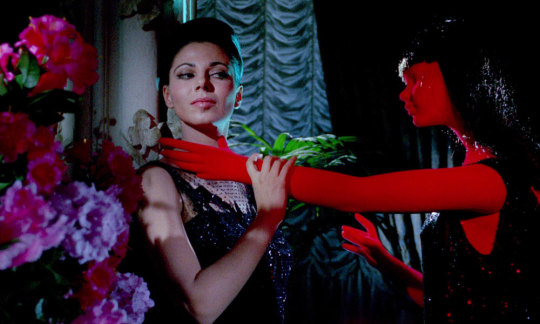
Recently watched: Italian horror maestro Mario Bava’s slasher movie Blood and Black Lace (1964). Tagline: “A fashion house of glamorous models becomes a terror house of blood!” A sadistic masked and gloved serial killer is relentlessly stalking and murdering his way through the fashion models of the chic haute couture salon run by ultra-rich designer Cristina (Eva Bartok) and her lover Max (Cameron Mitchell). (Picture a procession of fiercely elegant women wearing cocktail dresses with impeccable beehive hairdos getting gruesomely murdered one by one). I’m no expert on Bava - the only other film of his I’ve seen is Black Sunday (1960) with cult movie queen Barbara Steele – but wow, what a stylist! From the credits to the white-knuckle finale, with the soundtrack (Latin exotica, heavy on the bongos), costumes, baroque sets and lighting (characters are routinely bathed in fuchsia or green neon, even when that light source makes no sense) Bava envelopes you in a supremely alluring vision. Perhaps inevitably, there are vivid splashes of red: an incriminating leather-bound diary, handbags, telephones - and of course - plumes of blood. The victims’ grisly deaths still pack a genuinely nasty jolt. (As Slant magazine put it, “The killings in Blood and Black Lace are still disturbing yet have the vitality of pop art”). An additional bonus: the juicy overripe performances from Hollywood’s Cameron Mitchell and Hungary’s Eva Bartok, both veterans of European co-productions. (The same year, Mitchell starred opposite Jayne Mansfield in the truly wild German exploitation flick Dog Eat Dog – what a career!).
#blood and black lace#mario bava#cameron mitchell#eva bartok#lobotomy room#giallo#italian horror#slasher movies#serial killer#italian cinema
15 notes
·
View notes
Photo
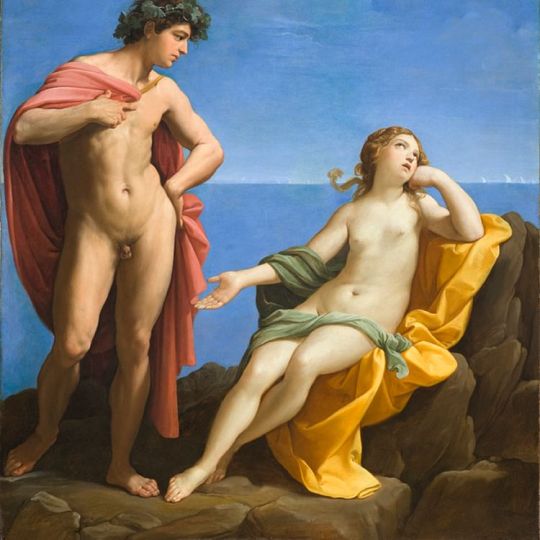
Interview: Dr. Bastian Eclercy on Guido Reni at the Städel Museum, Frankfurt
Misunderstood, neglected, forgotten. The Städel Museum in Frankfurt, Germany is
rediscovering one of the star painters of the Italian Baroque in a landmark exhibition: GUIDO RENI. The Divine. In his day, Reni (1575-1642) was one of the most successful and celebrated painters in all of Europe, coveted by the most important patrons, including the Borghese Pope Paul V, the Duke of Mantua, and the Queen of England. In this interview, James Blake Wiener speaks to curator Dr. Bastian Eclercy about the exhibition and Guido Reni’s brilliance as one the greatest artists of the Baroque era.
Continue reading...
33 notes
·
View notes
Text

Reign 2013-2017/ 03-01
Elizabeth Tudor Queen of England
Chi di questa sacrilega e profana
anglica Iezabel formò l’imago,
che, di sangue innocente aprendo un lago,
fe’ di martiri ognor strage inumana;
darle volto devea di tigre ircana
di serpe cironea, d’arabo drago;
e, se d’effigiarla era pur vago,
ritrar Progne crudele o Scilla insana,
ritrar Medea, Medusa, Alcina, Armida,
o Circe, o Sfinge, o vipera, o cerasta,
idra, chimera, arpia, furia omicida:
ch’indegna è ben, se l’arte a tanto basta,
che donna si dipinga o che s’incida
donna, che ’n sé di Dio l’effigie ha guasta.
("Elisabetta d'Inghilterra ", Giovan Battista Marino, Rime, XVI-XVII Century)
2 notes
·
View notes